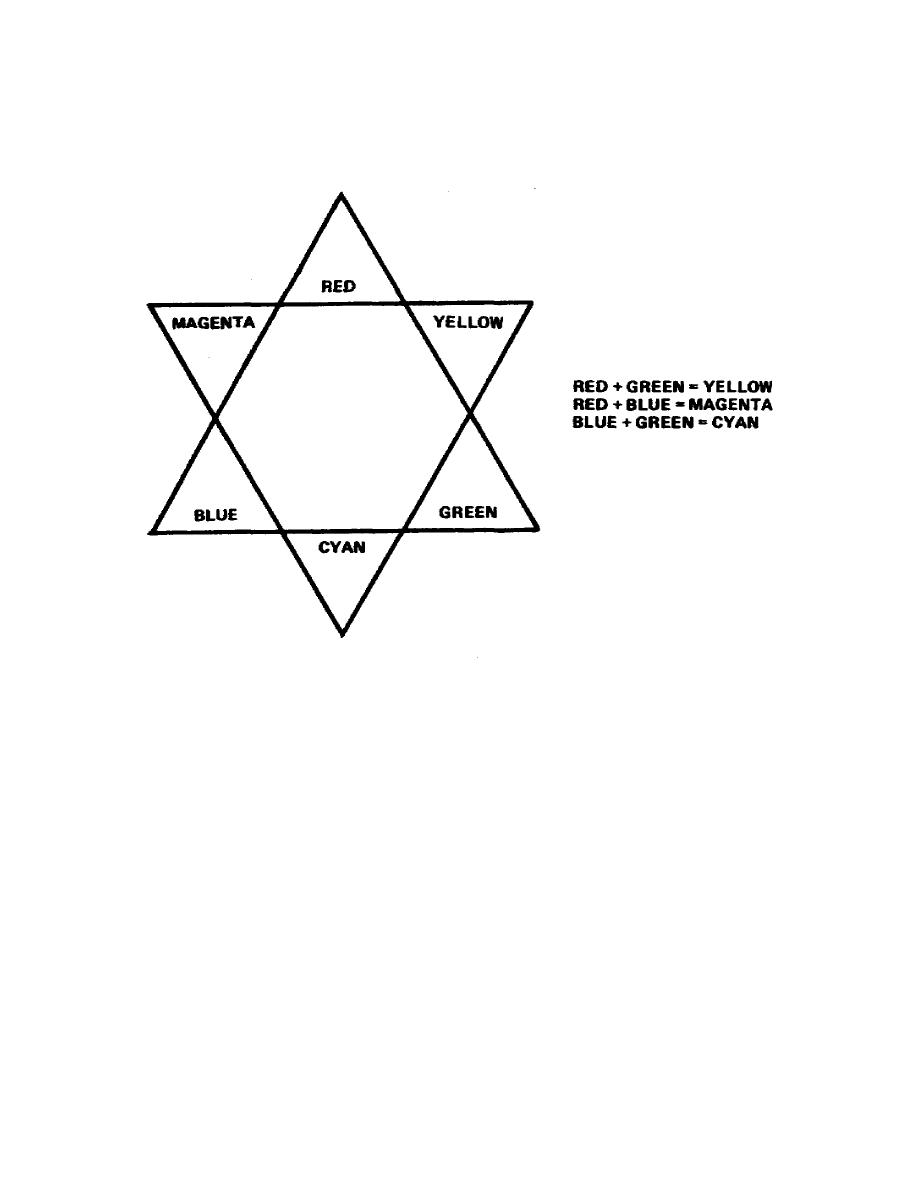
c. At this point, refer to Figure 2-2 and study the color star. Remember which colors are the
additive primaries (blue, green, and red) and notice that the subtractive primary colors between any two
of the additive primaries are mixtures of these two primary colors. Also, notice the colors that are
directly opposite to each other in this star; these colors are complementary to each other.
Figure 2-2. Color star
d. Although the original photographic record on color film uses the additive primary colors,
these are not suitable for the final color product. This is because any combination or primary colors over
one light source results in neutral density. A transparency, for example, must be viewed when you use
only one white light source. It is the subtractive process that makes the "final product" possible.
3.
White light or subtractive color process.
a. The white light method of exposing color paper requires only a single exposure. This
requires using the appropriate color printing (CP) or Color Compensation (CC) filters. CP filters are
acetate sheets and are placed between the light source and the negative. CC filters are gelatin and are
placed below the lens. Both filters have the same density characteristics and transmit the same amount
of light for a given factor. That is, a CC 20 Y will transmit the same amount of light as a CP 20 Y filter.
Some color enlargers are equipped with "dial-in filters." That is, the filter packs are enclosed in the
printer head. You dial the appropriate filter combination required.
13


 Previous Page
Previous Page
